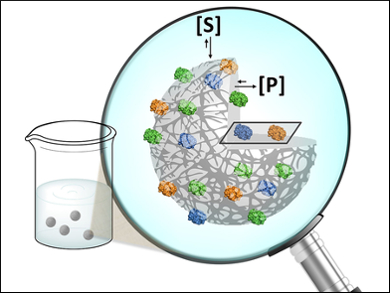Single-particle studies have been used for optimizing the performance of heterogeneous catalysts, but the approach is underused in heterogeneous biocatalysts. This is due to the fact that such systems are still developed through trial-and-error, and their characterization is based on observable parameters at a macroscopic level, which are hardly able to reveal the spatio-temporal performance and the intraparticle environments of the immobilized biocatalysts.
Fernando López-Gallego, CIC biomaGUNE, San Sebastian, Spain, and colleagues highlight the need to develop new techniques to monitor the structure and function of proteins during and after the immobilization process with spatio-temporal resolution at the single-particle level.
Different spectroscopic methods, such as micro-FTIR, micro-Raman, fluorescence, and atomic force spectroscopy, and circular dichroism, as well as microscopic methods including fluorescence, atomic force, and multiphoton laser scanning microscopy, reveal how the material defects, size dispersion, and functional patterning of the solid materials influence the final properties of the immobilized enzymes. Insights into protein conformation, mass transfer effects, and enzyme kinetics at the micro/nanoscale within a single particle contribute to understanding the productivity and stability of the heterogeneous biocatalysts determined by macroscopic analysis.
Although all this information contributes to develop more rational, reliable, and reproducible procedures for the fabrication of heterogeneous biocatalysts, there is still a long way to go until structure-function relationships of immobilized enzymes on porous materials at the nanometric scale can be established. In operando studies at the single-particle level must still gain in temporal resolution to study the use of reactants and the protein conformational changes during the biocatalytic transformation at very short times. Furthermore, there is a need to expand these techniques to monitor enzyme properties in complex chemoenzymatic processes and more sophisticated operational designs such as flow-(micro)reactors.
- Single-Particle Studies to Advance the Characterization of Heterogeneous Biocatalysts,
Ana I. Benítez-Mateos, Bernd Nidetzky, Juan M. Bolivar, Fernando López-Gallego,
ChemCatChem 2018.
https://doi.org/10.1002/cctc.201701590




